Fanart and personal art dump of an overly busy white collar. May contain overly niche or original characters that nobody cares about. http://bahamutneo.deviantart.com
Last active 60 minutes ago
Don't wanna be here? Send us removal request.
Text


KL Hokkien Mee (Malaysian Noodles) (x)
2K notes
·
View notes
Text

Eurasian Magpie (Pica pica), family Corvidae, order Passeriformes, screams at a Little Owl (Athene noctua), family Strigidae, order Strigiformes, who seems oblivious... Madrid, Spain
photograph by Ernesto Orellana
4K notes
·
View notes
Text




incredible


Starting a Hodge collection




8 notes
·
View notes
Text



2 notes
·
View notes
Text


Starting a Hodge collection




8 notes
·
View notes
Text
It's the hoppiest day of the year!
World Frog Day!
Here is a tiny frog from one side of the world:

This is Mini mum. That is a 10 euro cent coin.
And here is a tiny frog from the other side of the world:

This is Microhyla nepenthicola. That is a 50 Malasyian sen coin.
Frogs have evolved to extremely reduced body sizes gobsmackingly often. It is one of the coolest things. And basically every time they do this, they become more similar to one another, and also they lose whole structures, like ears, fingers, and toes.
Isn't it marvellous?
4K notes
·
View notes
Text
Its so sad there isnt a jorking it equivilent for food
36K notes
·
View notes
Text
Since I'm therapist-posting recently:
Legitimately self-compassion is the biggest mental health life hack of all time. I'm NOT talking about self-esteem. You do NOT have to like yourself one bit. You don't have to believe that you're a good person who deserves good things. You just have to believe that you're a person who deserves the things all people deserve.
You can't get from "I'm the Worst" to "I'm a worthy and lovable person" without passing through "I'm just a regular fuckup like everybody else."
Try it on. If you're really addicted to being mean to yourself, you can start by framing it as I'm Not Special. Embrace being a regular fuckup like everybody else.
9K notes
·
View notes
Text
I was at a bookstore looking through the art section and I saw a spine that said The Camden Town Nudes which was interesting because this didn’t seem like the bookstore where I would ever find something like that and I wanted to have a casual look but like. This also wasn’t exactly the bookstore where you felt like you could look at naked pictures let alone just suggestive paintings of them, it’s a really small shop as well, so I was like right I’ll just take a quick peek, I’m an art student, I love history, maybe I’ll buy it. I looked both ways and saw the shopkeep had left momentarily and no one was about, so I opened it and found it was an entire book featuring nude Edwardian women all painted by Walter Sickert between 1905-1912 and it was actually quite a revolutionary set of paintings for its time given that it featured very raw depictions of working class nude women in dark London instead of the elegant, white bedsheet clad, Demure middle and upper class women usually depicted.
And of course RIGHT as I flip to this lady’s boobs practically taking up an entire double page spread, every customer in a 5 mile radius appeared from around the corners of the shelf including the shopkeep and immediately regressing to a wet, pathetic Edwardian man from 1908, startled, I dropped the large book which caused a giant SLAP on the floor in this already silent store thus causing all patrons to look down at me scrambling on my knees to close a giant book of Edwardian boobs and let me tell you it would not have been nearly as funny had I not immediately felt like some Edwardian local pervert who just tried to sneak a cheeky peek at the erotic book in the bookstore only to drop it dramatically causing a scene, red up to his ears trying to shove it back on the shelf. Like such a casual and normal thing in modern day but looking at Edwardian women suddenly turned it into this egregious act as I apparently became possessed by the spirit of a moustached man in a bowler hat and morning coat going Good Heavens I mustn’t gaze upon these images in public lest the constable haul me away!
32K notes
·
View notes
Text
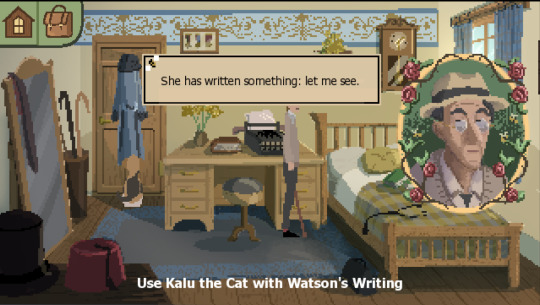
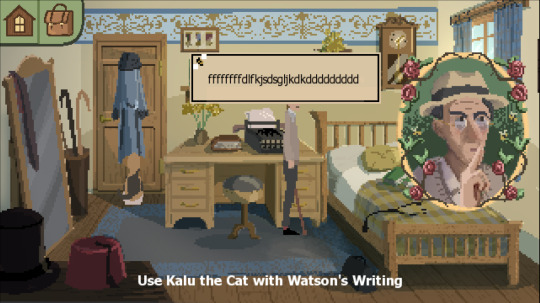
10/10 wouldn't change a thing
342 notes
·
View notes
Text
Okay I’m currently furious that migraines are often so blindly easy to treat and I had to find this out myself at the age of 26 when I’ve been to a neurologist since I was 11 lol so I’m about to teach you two neat and fast little tricks to deal with pain!
The first is the sternocleidomastoid muscle, or the SCM muscle.

This big red section is responsible for pain around the eye, cheekbone, and jaw, as well as some temple pain. Literally all you have to do is angle your head down a little, angle it away from the side that hurts, and then you can gently pinch and rub that muscle. I find it best to start at the bottom and travel upwards. The relief is so immediate! You can increase pressure as you feel comfortable doing so.
Here is a short and easy video showing this in action
The second is a fast and easy stretch that soothes your vagus nerve, which is the nerve responsible for calming you down. The vagus nerve, for those unfamiliar, is stimulated by deep breathing such as yawning, sighing, singing, or taking a deep breath to calm your anger in a tense situation.
You can stretch this out by sitting up as straight as possible (this does not have to be perfect to work) and interlacing your fingers. Put your hands on the back of your head with your thumbs going down the sides of your neck and, while keeping your face forward, look all the way to one side with just your eyes. Hold that until you feel the urge to breathe deeply or yawn, or until you can tell there’s a change. Then do the same thing on the other side. When you put your arms down, you should clearly be able to turn your head farther in both directions. If the first session doesn’t get rid of your migraine, rest and repeat as many times as necessary. I even get a little fancy with it and roll my eyes up and down along the outer edge sometimes to stretch as much as I can.
If you need a visual here’s a good video on it. I know some of the language they use seems questionable but this is real and simple science and should not be discarded because it’s been adopted by the trendy wellness crowd!
I seriously cannot believe I didn’t hear a word of this from any doctor in my life. Additionally, if you get frequent recurring migraines, you may want to see a dietician. Migraines can be caused by foods containing histamines, lectin, etc. and can also be caused by high blood pressure in specific situations such as exercise, stress, and even sex.
If any of this information helps you I’d love to hear it btw! It’s so so fast and easy to do. Good luck!
155K notes
·
View notes
Text
I thought The Six Napoleons was a Sherlock Holmes story, not a Scooby-Doo episode...?
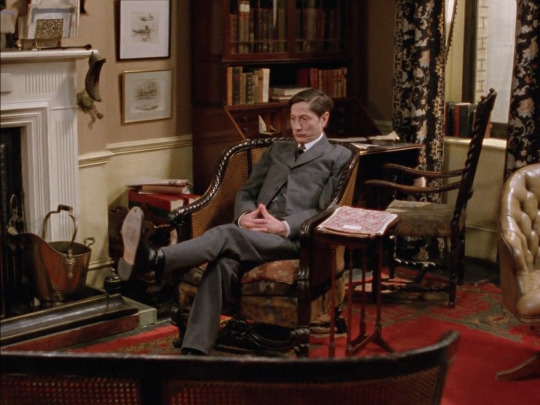
Lestrade has been waiting for Holmes for some time and is increasingly bored.

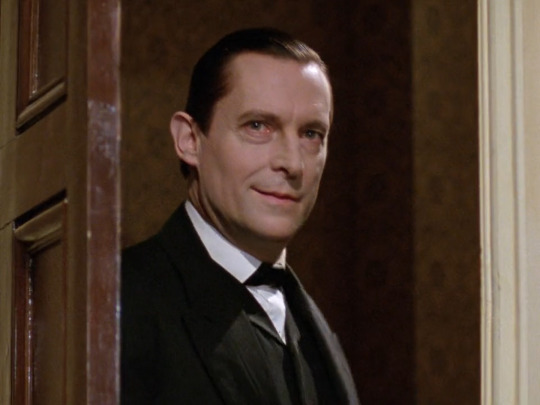
Holmes arrives, unnoticed.
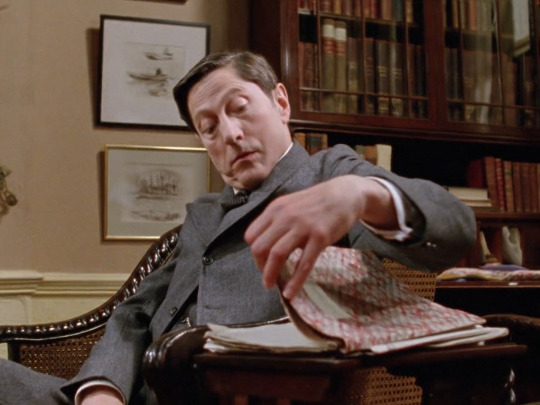
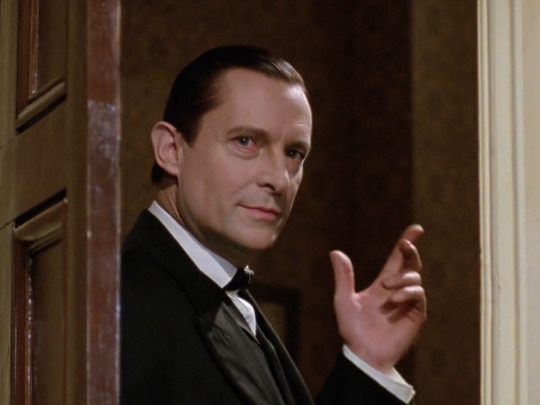

Holmes and Watson retreat into the hall and approach the door again, coughing and shuffling their feet loudly, giving Lestrade time to stand and greet them with dignity.
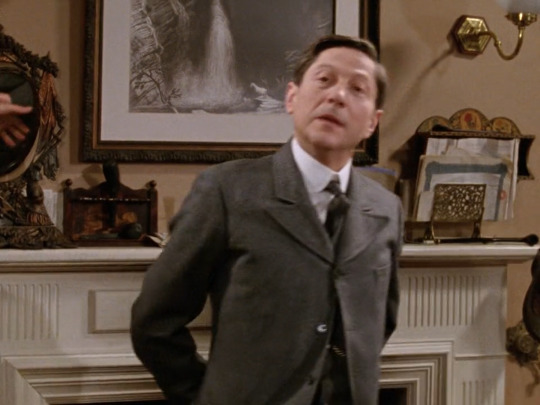

"Lestraaaaade!"

(Tee hee.)
Later,




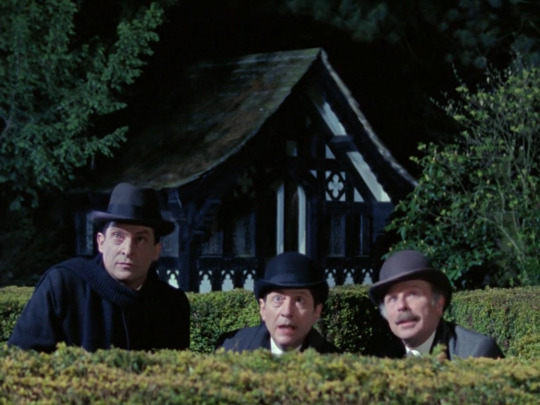
and



And then the episodes ends with Lestrade, with deep sincerity, telling Holmes, "We're not jealous of you at Scotland Yard. No, sir. We're proud of you."
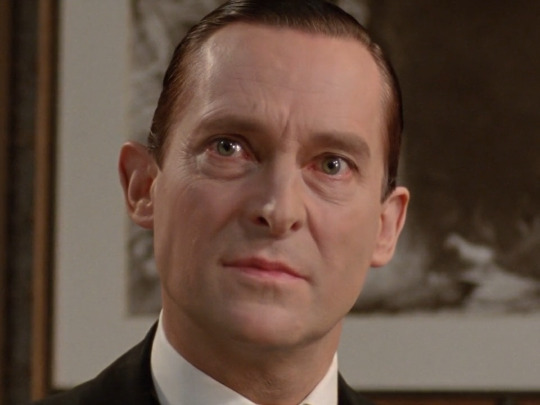
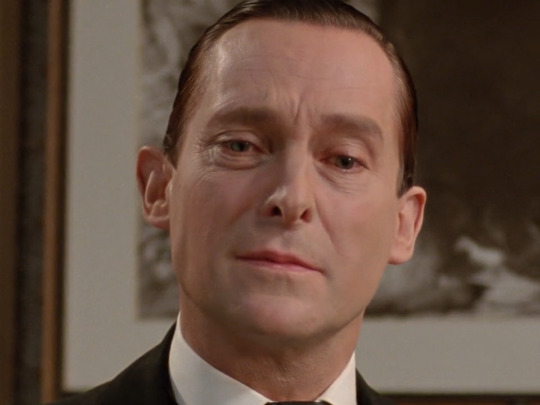
I THOUGHT THIS WAS A SCOOBY-DOO EPISODE JEREMY.
512 notes
·
View notes
Text
How come semi trucks in Europe look like “toot toot :)” and in North America they look like “HONK HOOOOOOOONK >:|”
255K notes
·
View notes
Text
Hello friends and welcome to another edition of Wacky WWII Hijinks! Get hype, today we’re gonna learn about rad spy shit
okay, first some background: the OSS, or Office of Strategic Services, was an American intelligence agency during WWII that was in charge of clandestine shit like espionage, propaganda, and counter-intelligence. It was run by a dude called “Wild Bill” Donovan, because that’s the kind of name people had back then somehow
More background: the SOE, or Special Operations Executive, was a British organization in charge of espionage, sabotage, and assisting local resistance groups in Europe. It didn’t have a director with a weird nickname, but it was sometimes called the Baker Street Irregulars, which honestly I think is even better
as you can imagine, these two organizations came up with a lot of weird shit to help their agents infiltrate into occupied Europe, so let’s get to it already dang
Rodent bombs

this one comes to us courtesy of the SOE and were intended for use in boiler rooms, because the british figured that anyone finding a gross dead rat while stoking a boiler would probably just chuck the corpse into the fire and be done with it. Except this time the boiler would explode.
Rat asses, as you can see from the pencil fuse in the image, could also be rigged for timed explosions instead, for those occasions when you’re on a tight schedule about raining down petrified rat entrails in your enemy’s basement
unfortunately (???), the RATS, EXPLOSIVE, never saw actual combat use, as the first box the SOE dropped into Europe was intercepted by the Nazis, who probably had a read good “what the FUCK” moment when they opened it
Coal bombs

along similar lines but far less fucking weird were coal bombs, which were essentially the same thing as the rat bombs but with hollowed out coal instead. Both the SOE and OSS actually used these ones
Poop bombs (lol)
they then went a bizarre step further and developed mule dung bombs for use in Africa- “specially sculpted” replicas of mule poop that were packed with explosives. These weren’t meant to be chucked into boilers, but rather left around for enemy forces to drive over. Here is an actual American soldier talking about collecting mule shit for war purposes, from O'Donnell’s book Operatives, Spies, and Saboteurs
Mule turds were to be found in great abundance…we added a few samples of local mule dung, and this was carefully packed and sent to London. We took care to explain that the full, rich horse dung of the British countryside would not do in Morocco; it was the more watery, smaller mule type that would pass there without suspicion. Also, it was important to have it a deep sepia color, sometimes with greenish shades, the product of straw and grass, not of oats and hay. In due course of time the British London office made up explosive turds from these samples, and we used them to good effect later in Tunisia.
You do you, mule-poop-connoisseur-OSS-agent.
Bat bombs

this is not an actual picture of a bat bomb, but I found it while googling for images to use and I love it okay thanks
anyway are you sensing a theme here?
This one was, surprisingly, not the product of OSS or SOE, but of an American dentist named Lytle S Adams. Everyone needs a hobby I guess.
The idea behind bat bombs was that you take a bunch of bats (specifically Mexican free-tailed bats), tie some little bombs to them, and stuff them into a plane. Then the plane flies over Japan (because Japan has a lot of wooden buildings and therefore is particularly susceptible to incendiary use), and drops the bats. The bats fall down to building-level, then start flying around looking for somewhere to hide because they are having a seriously bad bat day. In theory, the bats would fly up into the eaves and roofs of the buildings, at which point the timers on their little bombs would go off, sending both bats and buildings up in flames.
This idea actually, somehow, made it into the testing phase, but was never used because honestly what the fuck
Aunt Jemima
guess what it’s another bomb! In this case, a plastic explosive that looked like flour (hence the name) and could even be baked into something resembling food products, although just a tad more poisonous than most food you find outside of school cafeterias. Aunt Jemima was easy to smuggle through enemy lines due to its innocuous appearance, and the OSS sent a bunch of it to Chinese resistance fighters against the Japanese
Silk printing
“wait what?”, I’m sure you’re saying. “finally something that doesn’t explode and it’s…just a totally normal thing?”
yeah. Here’s the thing: if you sent an agent or resistance fighter into occupied territory, there was a pretty good chance they were gonna get frisked at some point, because that was a pretty routine occurrence in places like occupied France. If said agent/resistance member were carrying, say, a map showing escape routes or a code sheet for them to use to send information, and they got searched, either that paper is gonna be found with their other papers or, if hidden on their person, make a pretty distinct crinkling noise when the Gestapo agent gets friendly with that area. Plus, you know, paper doesn’t do great when wet
the solution to this was printing stuff on silk, like this:

this is Leo Marks, the creator of the silk code keys and one time pads that SOE used for their agents, holding a one time code pad that has been printed on silk
these silk documents could be sewn into an agent’s clothing while still being totally undetectable to a pat-down, or even hidden somewhere like rolled up in a thin tube and then stuck inside a shoelace. If you went a step further and printed the document using invisible ink, agents could carry maps around in plain view as handkerchiefs or have their codebook printed directly onto their underwear, because hey why not
I know it sounds boring after all this exploding wildlife, but silk-printed documents were hugely important to covert operations during WWII
things that should not be guns but are, in fact, guns
tbh I’m just gonna let the pictures speak for themselves on this one


apparently there was an umbrella one too but I couldn’t find a picture of that one
suitcase radio

if you’re dropping people into enemy territory to gather intelligence, you need some way to communicate with them. This was a problem, since cell phones hadn’t been invented yet and radios at the time were like, fucking huge, which is not great when you’re trying to hide them from the Gestapo
SOE got around this problem by creating the suitcase radio, which is exactly what it sounds like- a big old radio disguised as a suitcase. Obviously they weren’t gonna stand up to any examination more rigorous than “yes that is suitcase shaped”, but it allowed agents to at least walk around in public with it without attracting too much attention
Joan-Eleanor system

keeping with the “problems with radios” theme, we have the OSS’ Joan-Eleanor system. See, normal radio frequencies were monitored by both sides in the war, which was Not Great. It meant both that radio transmissions could be intercepted by the enemy (and subsequently decoded, like Germany’s Enigma messages), and also that you could use radio direction finders to pinpoint the location of a broadcasting radio. Every time a covert agent turned on their radio to report something, they ran the risk of being located and hella murdered
the Joan-Eleanor (or J-E) system, in contrast, was a Very High Frequency (VHF) system. VHF bands couldn’t be easily monitored, unlike the frequency bands used by other radios.
Why? I actually have no idea. Listen I just read things and ramble about them on the internet, I don’t know jack shit about radios
anyway, as a result the system was hard to detect but very short range, so it worked by giving the agent on the ground a hand-held transmitter (the Joan), that talked to a bigger transceiver (the Eleanor) that was in a plane. At prearranged times the plane would fly over wherever the agent was and they could have an undetectable chat
compass buttons

it’s a compass! It’s a button! It’s a compass hidden inside a button!
The BBC
okay this one isn’t technically equipment, but it’s cool and was used by spies so you can deal with it
it turns out that during the war pretty much everyone listened to the BBC, even at risk of arrest in occupied territories. The SOE used this to their advantage by working with the BBC to broadcast seemingly meaningless words or phrases at certain times, which were actually pre-arranged coded messages or orders to agents or resistance members
if an agent had to win over the resistance’s trust or prove they were actually spies and not just random dudes, they could ask the person whose trust they were trying to win to provide them with a personal word or phrase. Then the agent could radio the SOE, give them the word/phrase and ask it to be broadcast at a certain time, which the other person would hear, and bam best friends
invisible ink
is there anything more quintessentially spy? agents were often supplied with a little vial of invisible ink before being dropped into occupied territory, for communications outside radio broadcasts. the ink could be developed (made visible) by means of chemicals or exposure to ultraviolet light (some invisible inks are developed by heat, but the SOE at least avoided those because of the worryingly high risk of accidental exposure. “whoops I sat to close to the fire and now everyone can see I actually drew little devil horns on this poster of Hitler you gave me”)
REAL COOL FACT: Josephine Baker, the famous Black singer, was actually a spy for the French Resistance during the war, and smuggled information during her concert tours of Europe by writing it in invisible ink on her sheet music! wow!

okay I’m gonna stop now because I keep thinking of more shit to add and if I do this will literally never end (sorry). For further reading I recommend the O'Donnell book mentioned above and Leo Marks’ Between Silk and Cyanide. Also apparently H. Keith Melton’s OSS Special Weapons & Equipment is really good, but I haven’t read it personally (though I totally stole the pictures of the OSS guns from there, hooray the internet)
OKAY HOPE YOU LIKED IT BYE FRIENDS
398 notes
·
View notes
Text
Being a fan of something that got canceled before its time or was left unfinished is bad enough, but what's even worse is the frustration of being a fan of lost media. You know more content was made, but unless a miracle happens in your lifetime you will never ever see it.
Special shout out to fans of old TV and radio shows, newspaper and pulp serials, and ancient literature.
#i would've loved to watch a william gilette production/act in full after reading starrett's book#also of course#the secret of sherlock holmes
661 notes
·
View notes
Photo






David Burke one more time as Dr. Watson in the 1995 documentary Sherlock Holmes: the Great Detective
879 notes
·
View notes

